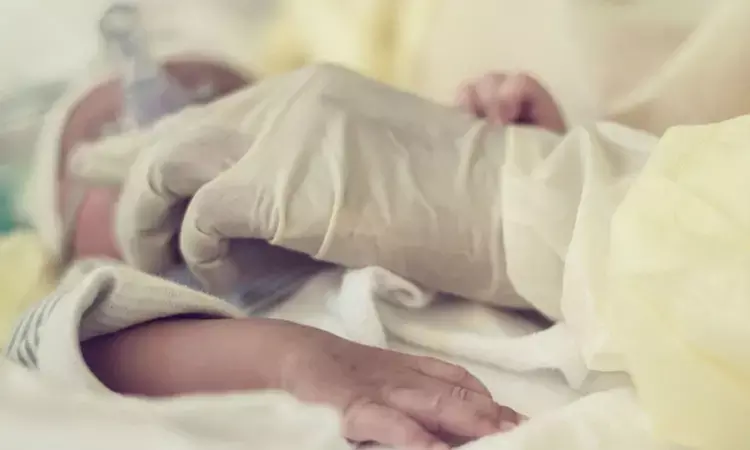- Home
- Medical news & Guidelines
- Anesthesiology
- Cardiology and CTVS
- Critical Care
- Dentistry
- Dermatology
- Diabetes and Endocrinology
- ENT
- Gastroenterology
- Medicine
- Nephrology
- Neurology
- Obstretics-Gynaecology
- Oncology
- Ophthalmology
- Orthopaedics
- Pediatrics-Neonatology
- Psychiatry
- Pulmonology
- Radiology
- Surgery
- Urology
- Laboratory Medicine
- Diet
- Nursing
- Paramedical
- Physiotherapy
- Health news
- Fact Check
- Bone Health Fact Check
- Brain Health Fact Check
- Cancer Related Fact Check
- Child Care Fact Check
- Dental and oral health fact check
- Diabetes and metabolic health fact check
- Diet and Nutrition Fact Check
- Eye and ENT Care Fact Check
- Fitness fact check
- Gut health fact check
- Heart health fact check
- Kidney health fact check
- Medical education fact check
- Men's health fact check
- Respiratory fact check
- Skin and hair care fact check
- Vaccine and Immunization fact check
- Women's health fact check
- AYUSH
- State News
- Andaman and Nicobar Islands
- Andhra Pradesh
- Arunachal Pradesh
- Assam
- Bihar
- Chandigarh
- Chattisgarh
- Dadra and Nagar Haveli
- Daman and Diu
- Delhi
- Goa
- Gujarat
- Haryana
- Himachal Pradesh
- Jammu & Kashmir
- Jharkhand
- Karnataka
- Kerala
- Ladakh
- Lakshadweep
- Madhya Pradesh
- Maharashtra
- Manipur
- Meghalaya
- Mizoram
- Nagaland
- Odisha
- Puducherry
- Punjab
- Rajasthan
- Sikkim
- Tamil Nadu
- Telangana
- Tripura
- Uttar Pradesh
- Uttrakhand
- West Bengal
- Medical Education
- Industry
Home oxygen therapy for bronchiolitis well-accepted by parents and caregivers: AAP

Australia: A recent study in the journal Pediatrics has supported home oxygen therapy (HOT) as an acceptable, safe, and feasible treatment for bronchiolitis. The study further adds that evidence of cost-effectiveness, however, remains limited.
Bronchiolitis is the forefront cause of hospitalization in children and infants younger than two years of age. Recent data, however, have shown a decrease in admissions for bronchiolitis, and there remains a substantial burden on the pediatric health care system. Hypoxia, dehydration, and increased work of breathing are the most common reasons for admission. Treatment remains supportive mainly. Home treatment options targeting these areas can potentially reduce the burden on individual family units and the health care system.
Hospital-at-Home (HAH) provides hospital-level care at home, reducing pressure on the hospital system. Considering this, Joanna Lawrence, Department of Paediatrics, University of Melbourne, Melbourne, Australia, and colleagues aimed to review the acceptability, feasibility, and safety of HAH for bronchiolitis and assess the cost-impact on society and hospitals.
For this purpose, the researchers searched the databases Embase, Pubmed, Ovid Medline, Cochrane Library, Web of Science, and CINAHL. They selected retrospective audits, randomized control trials, and prospective observational trials of infants with bronchiolitis who received HAH (nasogastric feeding, oxygen, remote monitoring). Studies have been limited to the English language since 2000. All analyses were reviewed in duplicate for inclusion, data extraction, and risk of bias.
Inclusion criteria were met by ten studies, all for home oxygen therapy. One abstract on nasogastric feeding did not fulfill full inclusion criteria.
The study yielded the following findings:
- The researchers found no studies on remote monitoring.
- Both at altitude and sea level, HOT appears feasible in terms of uptake (70%–82%) and successful completion.
- Two qualitative studies reported caregiver acceptability.
- There were seven reported adverse events (0.6%) with 0 mortality in 1257 patients.
- Cost studies showed savings, although they included costs to hospitals only.
The study, however, was limited by the presence of a small number of studies with heterogenous study design and quality and the absence of adequately powered randomized control studies.
"Evidence that supports the feasibility and safety of managing oxygen requirements for bronchiolitis in the home exists, particularly in areas of high altitude," the researchers wrote. "For a better understanding of HAH's role in bronchiolitis management, further studies are needed at sea level."
More studies are required to examine the cost-effectiveness by including costs to society of oxygen therapy and exploring health care systems outside of the US to determine alternate strategies to reduce inpatient durations. And to examine the feasibility and safety of models of care to support other care needs such as observation of those at deterioration risk and NGT feeding.
Reference:
Joanna Lawrence, Ramesh Walpola, Suzanne L. Boyce, Penelope A. Bryant, Anurag Sharma, Harriet Hiscock; Home Care for Bronchiolitis: a Systematic Review. Pediatrics 2022; e2022056603. 10.1542/peds.2022-056603
Dr Kamal Kant Kohli-MBBS, DTCD- a chest specialist with more than 30 years of practice and a flair for writing clinical articles, Dr Kamal Kant Kohli joined Medical Dialogues as a Chief Editor of Medical News. Besides writing articles, as an editor, he proofreads and verifies all the medical content published on Medical Dialogues including those coming from journals, studies,medical conferences,guidelines etc. Email: drkohli@medicaldialogues.in. Contact no. 011-43720751


